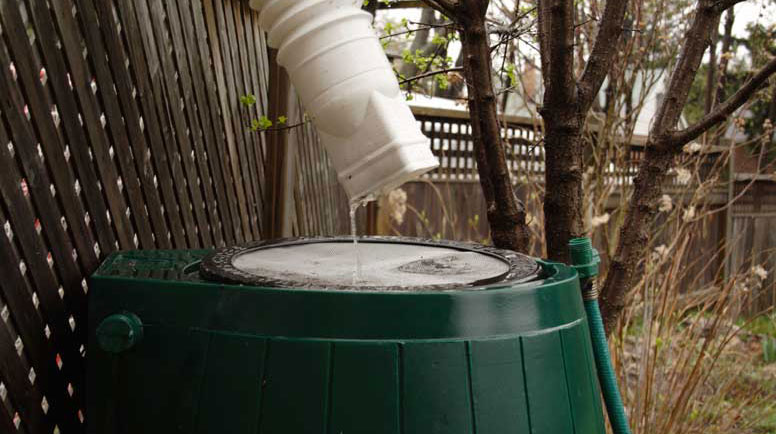LANDSCAPING PROJECTS YOU CAN DO WITH KIDS
Adults shouldn’t have all the backyard fun
For trusted expertise and superior results,
find a landscape professional near you.

The collection and use of rainwater is an environmentally friendly practice that has seen growing interest in recent years as more people accept the responsibility for stewardship of our natural resources. Many families are using captured water for bathing, household cleaning, gardening, and even drinking. To determine if harvesting rainwater makes sense for you, it is helpful to understand a bit about the practice, the benefits, and the types of catchment systems that are available.
The Basics and Benefits
Catching and using rainwater has been done for centuries; in fact, the practice has been and remains a necessity in many countries where water is in scarce supply. Today, particularly in drought-prone regions of the country, homeowners are taking a new look at the old practice of harvesting water. There are numerous benefits of using this sustainable water source including 1) the potential for significant cost savings on water bills; 2) improved health for indoor and outdoor plants; 3) reduced likelihood for flooding and erosion by reducing water runoff; and 4) decreased burden on municipalities’ water supplies.
It is important to note that many states restrict water collection and several have legislated that runoff from rain belongs to the state. So, if you are considering capturing water for in-home use, you should first check to make sure such a practice is permissible in your area. The National Conference on State Legislators offers a snapshot of limitations in certain states but it would be prudent to consult with your state or local government office for the most-up-to-date information.
Types of Catchment Systems
There are various rainwater catchments systems that can be used – from basic homemade barrels to sophisticated manufactured commercial products. Prices range from under $20 to an investment of a few thousand dollars. With different systems, water can be collected from rooftops, storm water drains, bodies of water, and even from the land. Most of the systems used in residential environments involve water being collected and stored in tanks instead of those that allow water to be collected and charged into the ground for later use.
Selection of the most appropriate system for your use should be done based on cost, the amount of space you have to work with, and what you intend to do with the captured water. For beginners looking to see if a water catchment system is right for them, a simple barrel collection system is a good, easy, and affordable option. With this system, a barrel is placed under a downspout and the water collected can be used with plants, cleaning, and the like.
A Word of Caution
Many people incorrectly think that rainwater is pure and safe to drink. Captured water may not be safe for consumption as it is affected by how it is attained, how it is stored, what pollutants or chemicals it might have come into contact with, etc. Unless you are prepared to invest significant time to ensure the water is tested and determined safe for consumption, you may wish to limit rainwater use for non-drinking purposes.
Advanced Water Collection
After you have experimented on a small scale with using collected rainwater and enjoyed the results, you may be ready for a more sizable catchment system. If so, you will need to evaluate the types of systems available, your preferred tank material, and the size tank you will need. There are no right or wrong answers in making these decisions but with the size investment to be made, you will want to consider your options carefully and speak to representatives of various types of products available.
Whether you use captured water on a small or grand scale, you are making an environmentally friendly decision that will make a positive impact within your home and your community.
We recently updated our Privacy Policy. By continuing to use this website, you acknowledge that our revised Privacy Policy applies.